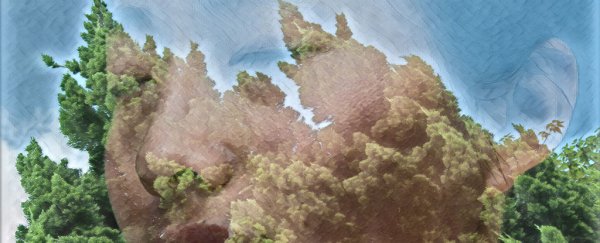
Just How Far Can Psychedelics Push The Boundaries of How We Assign Consciousness?
DAVID NIELD
3 APRIL 2022
Scientists continue to look into how psychedelic drugs and experiences alter our perception of reality, and a new study suggests that seeing consciousness in inanimate objects is one of the long-term effects.
Relying on self-reported responses to an online survey from 1,606 participants who said they had been through at least one belief-changing psychedelic experience, researchers evaluated how much consciousness the participants attributed to living and non-living entities in the world around them.
On average, belief in the consciousness of non-living and inanimate objects went up significantly after the psychedelic experience: Volunteers reported seeing more consciousness in everything from rocks to chairs.
"This study demonstrates that when beliefs change following a psychedelic experience, attributions of consciousness to various entities tend to increase," says psychiatrist Sandeep Nayak from the Johns Hopkins Center for Psychedelic and Consciousness Research in Baltimore.
"It's not clear why, whether that might be an innate drug effect, cultural factors or whether psychedelics might somehow expose innate cognitive biases that attribute features of the mind to the world."
Study participants rated their feelings based on the psychedelic experience that "led to the greatest belief change" in their lives. The experiences were the result of what the researchers called classic psychedelic substances, including psilocybin mushrooms, LSD, and ayahuasca.
For those who had experienced an episode that changed their beliefs, attribution of consciousness for inanimate natural objects rose from 8 percent to 26 percent on average, and for inanimate human-made objects rose from 3 percent to 15 percent.
Individuals also reported increases in seeing consciousness in plants (26 percent to 61 percent), fungi (21 percent to 56 percent), and insects (33 percent to 57 percent). The changes appear to be widespread and can last well after the experience.
Those involved in the research were 35 years of age on average and were predominately white (89 percent of participants), male (67 percent of participants), and from the US (69 percent of participants).
"On average, participants indicated the belief-changing experience in question occurred eight years prior to taking the survey, so these belief changes may be long-lasting," says Nayak.
Psychedelics are well known for leading to hallucinations both visual and auditory, and for shifting the perception of individual consciousness.
One of the ways in which research like this can be helpful is in the development of psychedelics as treatments for disorders like depression and addiction, and mental health issues where the brain needs to be rewired in some way. There are also signs that controlled, managed use of psychedelics could improve our physical health, too.
The study also tackles something that has been debated by scientists and philosophers alike for centuries: the nature of consciousness itself, a notoriously difficult concept to examine and study.
"The results suggesting that a single psychedelic experience can produce a broad increase in attribution of consciousness to other things, raises intriguing questions about possible innate or experiential mechanisms underlying such belief changes," says psychopharmacologist Roland Griffiths, from the Johns Hopkins Center for Psychedelic and Consciousness Research.
"The topic of consciousness is a notoriously difficult scientific problem that has led many to conclude it is not solvable."
The research has been published in Frontiers in Psychology.
https://www.sciencealert.com/psychedelic-experiences-can-make-people-think-of-inanimate-objects-as-conscious
Thanks to: https://www.sciencealert.com






 Sat Mar 23, 2024 11:33 pm by globalturbo
Sat Mar 23, 2024 11:33 pm by globalturbo

